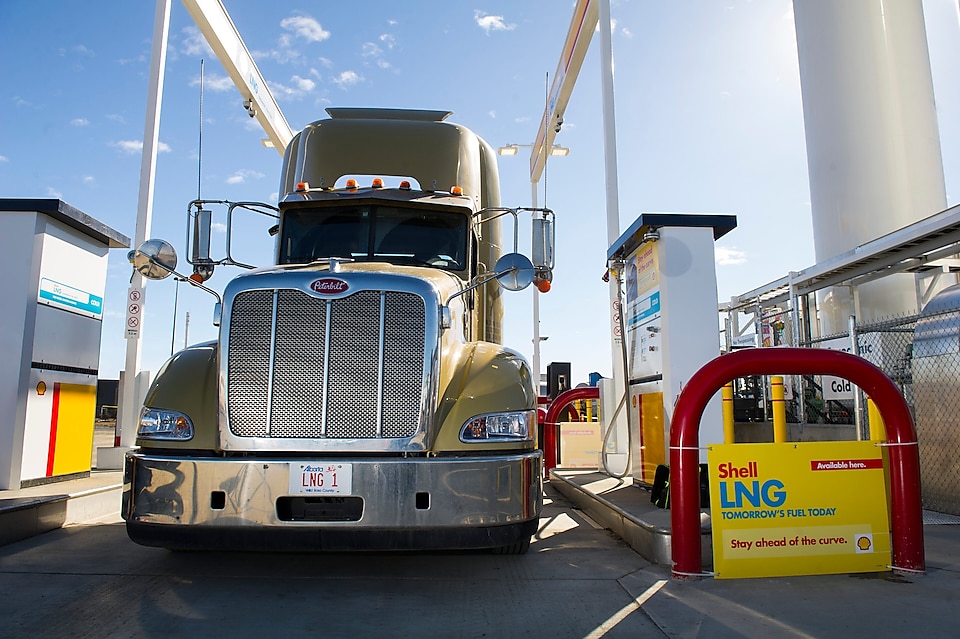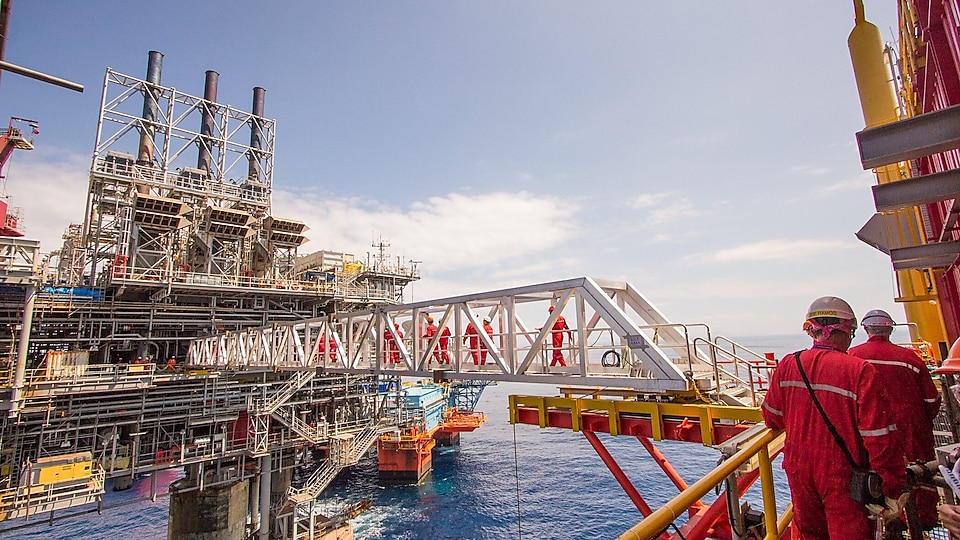
Natural gas
We are helping to meet growing global energy demand and limit CO2 emissions with cleaner-burning natural gas. It powers, heats and cools industries, homes and businesses, and it can be a good partner to renewable energy sources like wind and solar. Natural gas can also be used as a lower-carbon fuel for ships, trucks, buses and trains.
Global demand for natural gas, could rise by more than half by 2040, according to the International Energy Agency.
Natural gas is the cleanest-burning hydrocarbon. We explore for it, and produce it, on and offshore. It makes up more than half of our production today.
Advantages of natural gas
Natural gas is the cleanest-burning hydrocarbon, producing around half the carbon dioxide (CO2) and just one tenth of the air pollutants of coal when burnt to generate electricity.
It is abundant. If consumption remained at today’s levels, there would be enough recoverable gas resources to last around 230 years.
It is versatile. A gas-fired power station takes much less time to start and stop than a coal-fired plant. This flexibility makes natural gas a good partner to renewable energy sources like solar and wind power, which are only available when the sun shines and the wind blows.
Liquefied natural gas (LNG)
We cool natural gas to -162° Celsius (-260° Fahrenheit), turning it into a liquid and reducing its volume by 600 times, which makes it easy and economical to ship to energy-hungry places around the world. We also turn LNG back into gas for distribution to homes and businesses.
As a pioneer of LNG, Shell provided the technology for the world’s first commercial LNG plant in 1964, and shipped the very first commercial cargo, starting a global trade. We have been designing and building LNG plants.
Learn more about LNG on our global website
Floating LNG (FLNG)
Traditionally, LNG plants are built on land. But Shell is building a giant floating facility to produce liquefied natural gas at sea, Prelude FLNG. It will also be the largest offshore floating facility ever built – 488 metres (1,600 feet) long and 74m (243ft) wide.
Shell has developed revolutionary technology that allows gas to be produced, liquefied, stored and offloaded into LNG carriers at sea. It allows clusters of smaller, remote fields to be unlocked by one FLNG facility, or larger fields to be served by several FLNG facilities.

LNG for transport
Natural gas could form a bigger part of the transport energy mix as a lower-carbon fuel, alongside developments in vehicle efficiency, biofuels, hydrogen and electric mobility.
We are exploring the use of LNG as a transport fuel for trucks and ships with potential economic and environmental benefits compared to diesel and fuel oil. Other uses include in trains, the mining sector and industrial applications. We are also looking at ways to use LNG more in our own operations.
Read more about LNG as a transport fuel on our global website
Gas-to-liquids (GTL)
Shell’s gas-to-liquids (GTL) technology converts natural gas into high-quality liquid products that would otherwise be made from crude oil. These include transportation fuels, motor oils and the ingredients for everyday necessities like plastics, detergents and cosmetics.
GTL products are colourless and odourless. They contain almost none of the impurities – sulphur, aromatics and nitrogen –found in crude oil.
Learn more about gas-to-liquids (GTL) on our global website
Tight and shale gas
We are safely tapping into resources of natural gas, known as tight and shale gas, which are held deep inside rock. These huge resources of natural gas, the cleanest-burning hydrocarbon, have the potential to create an energy supply revolution around the world helping to meet growing energy demand.
More in Energy and Innovation
Overcoming technology challenges
We develop innovative technologies to find and safely unlock more, and affordable, energy from ever harder-to-reach places.
